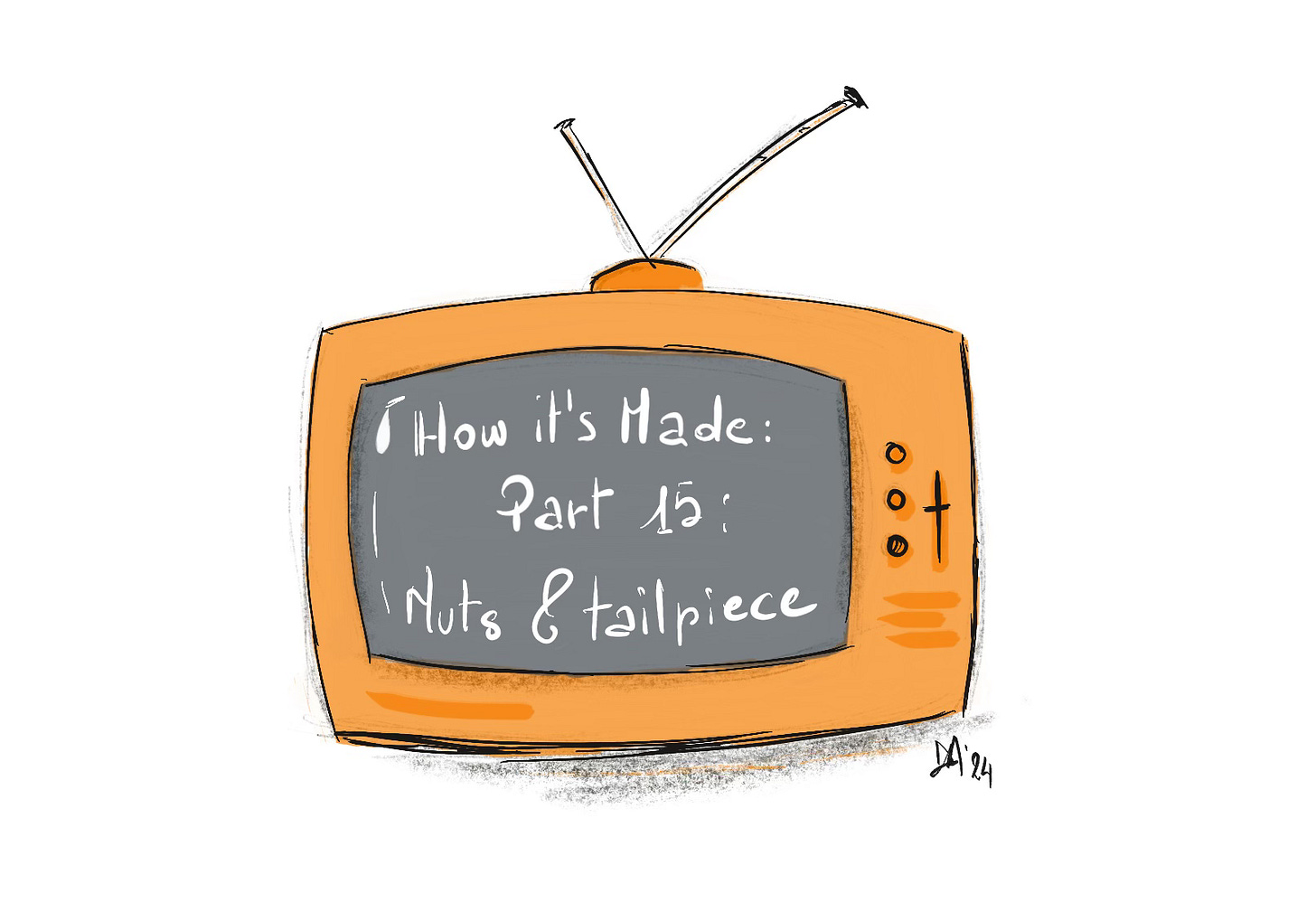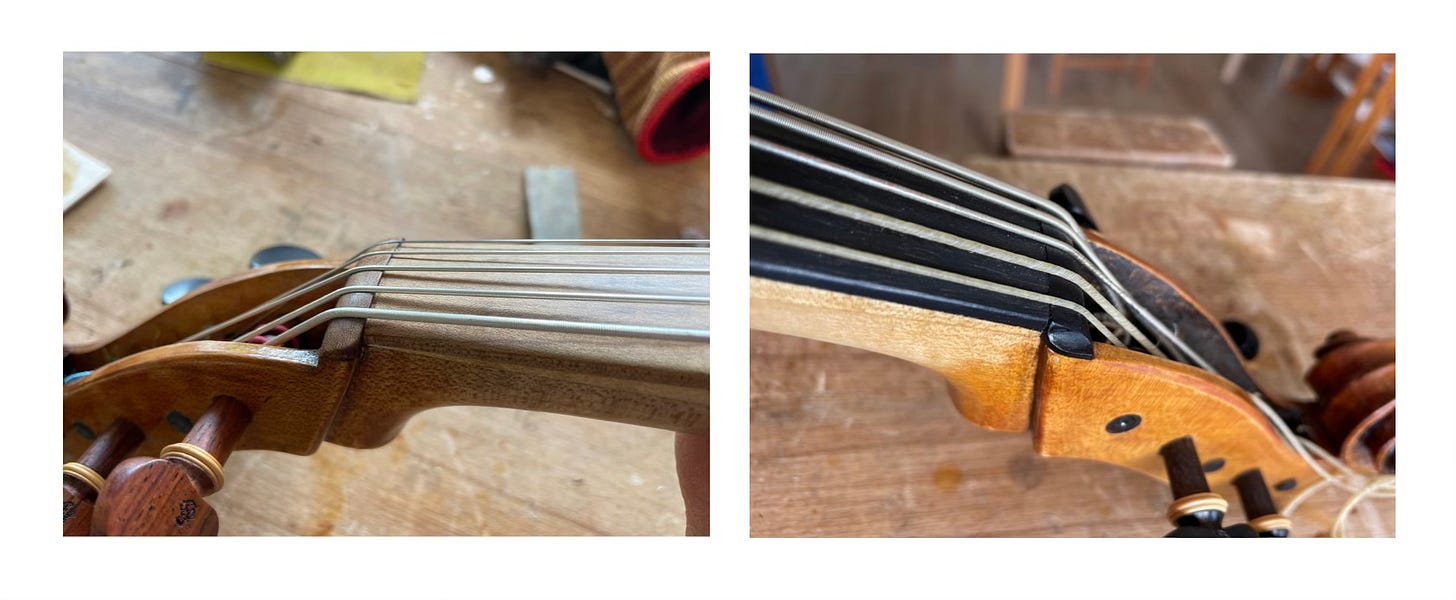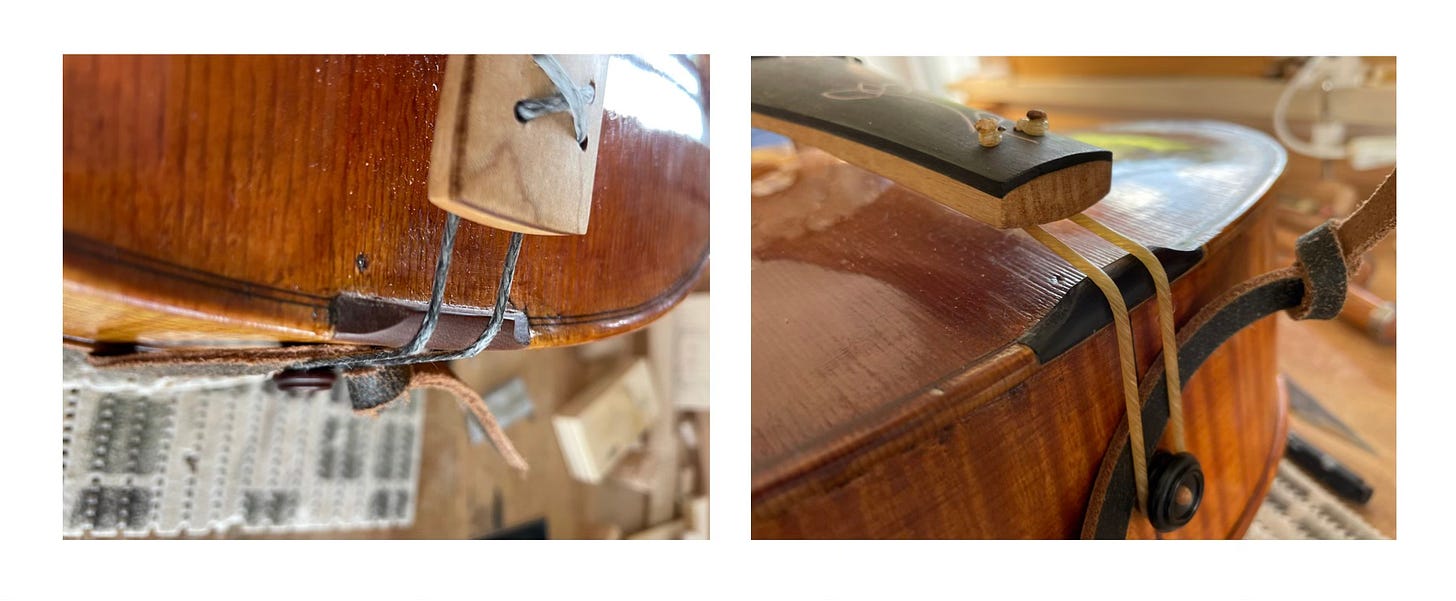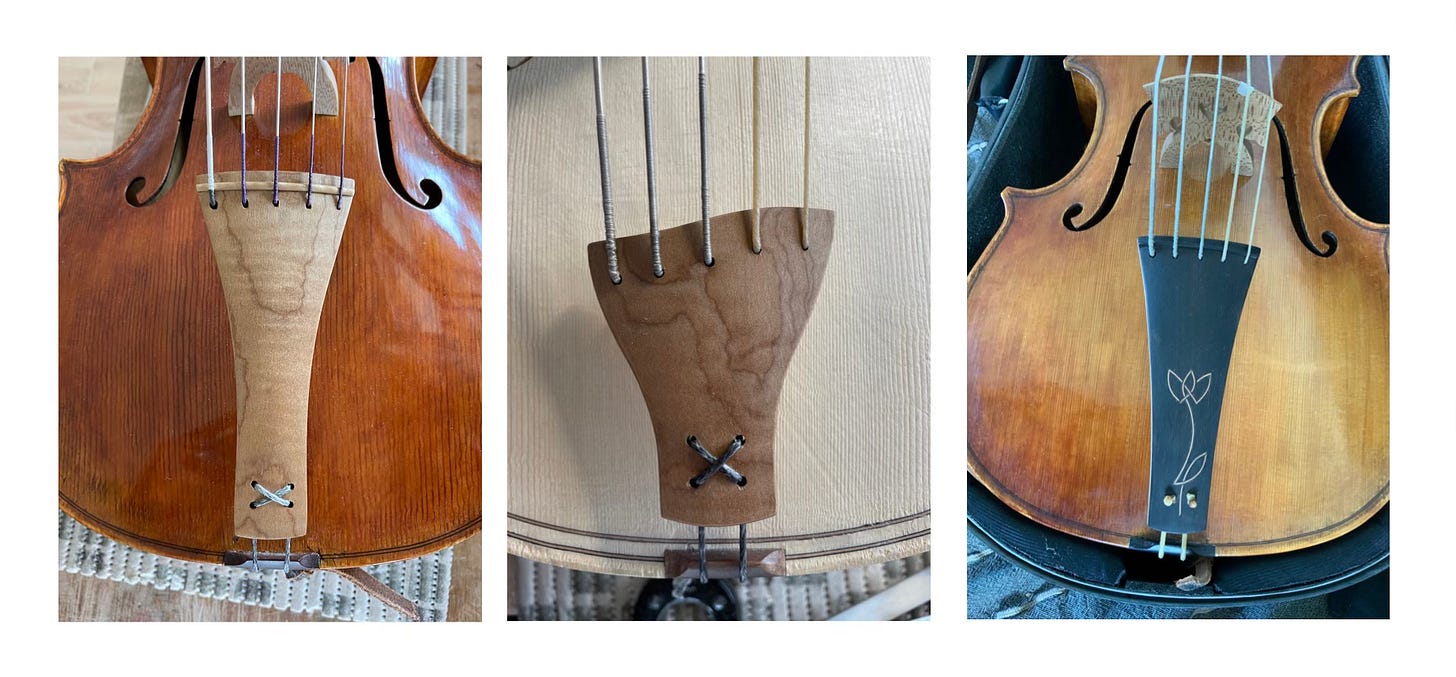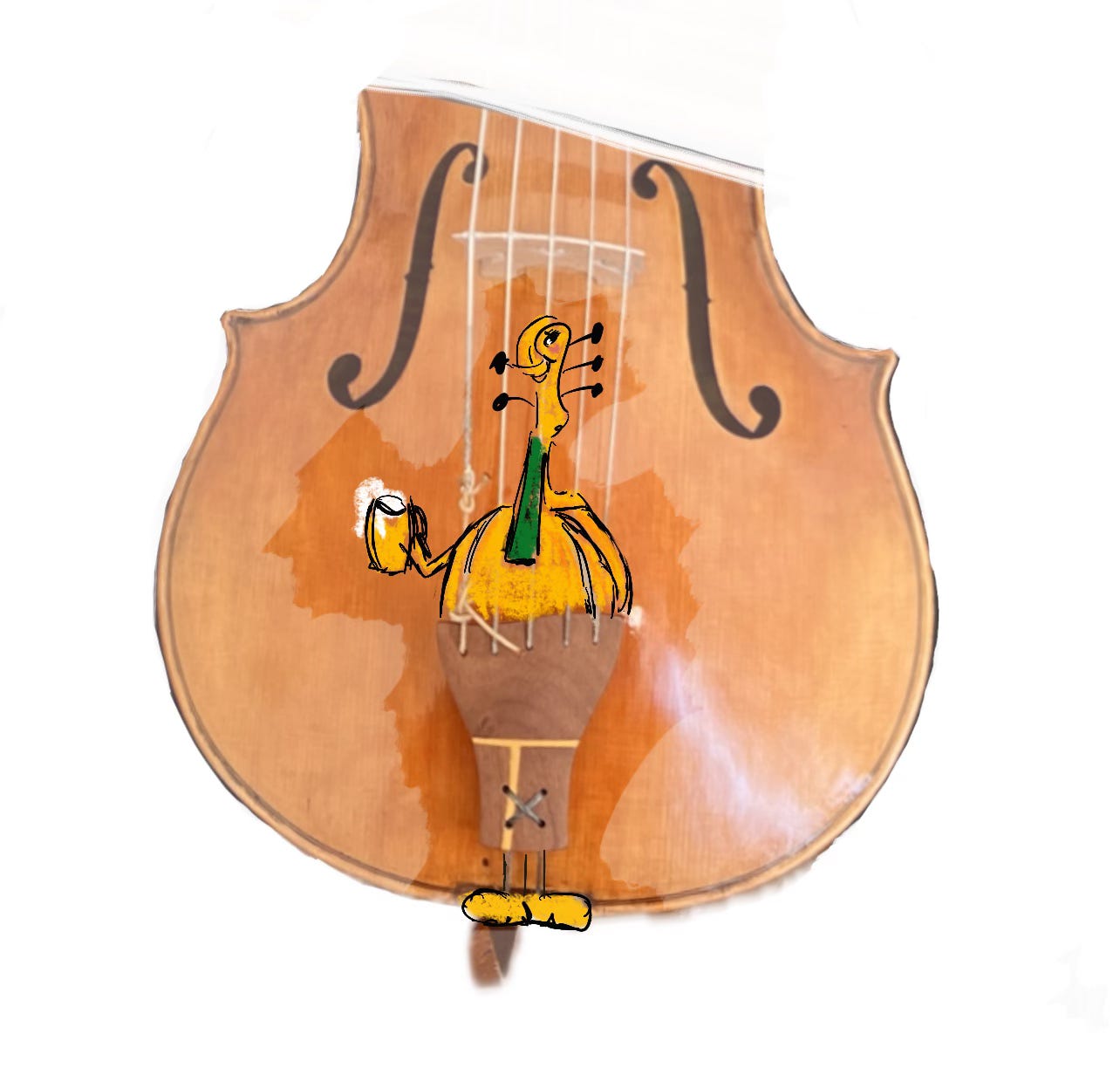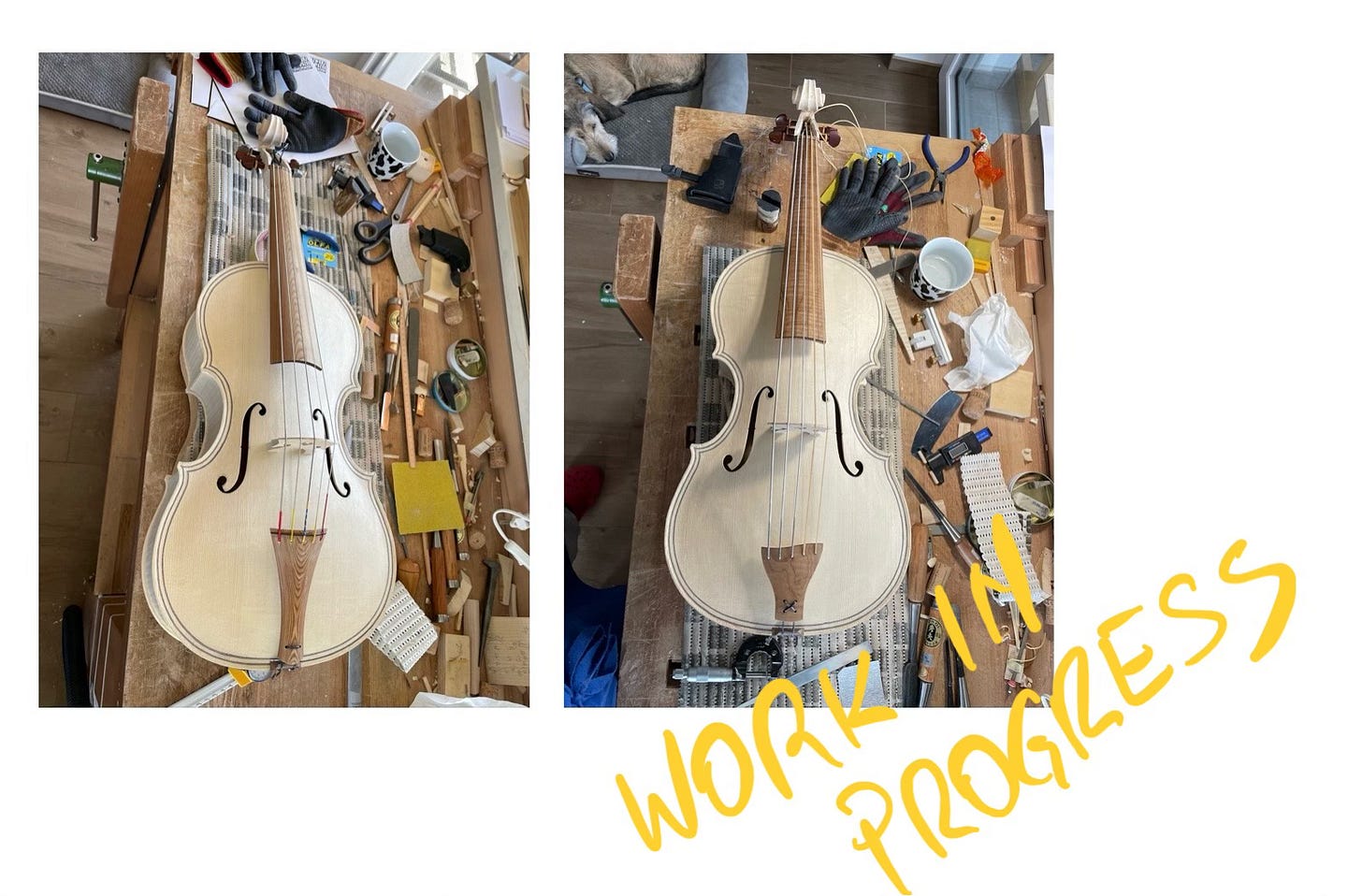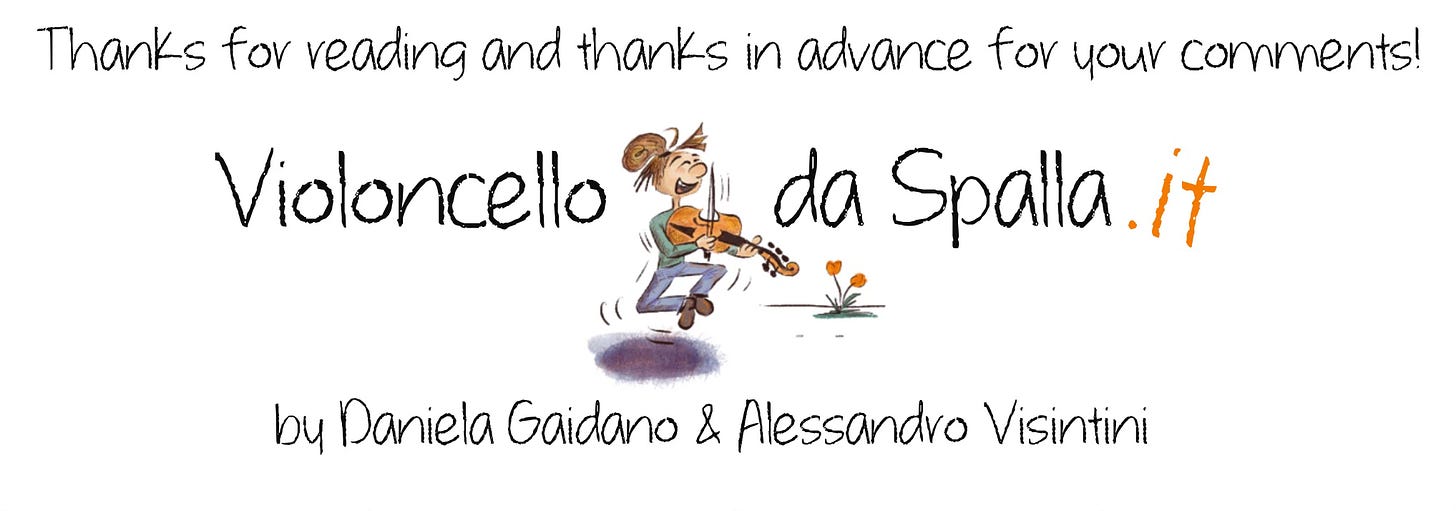I’m sorry for the long silence; that shouldn’t have happened. We were concentrated on completing our instruments as we were running short of time, but now we are on varnishing, so I will catch up with all that is needed to complete your Violoncello da Spalla. Expect a newsletter a day or so till the end!
The upper nut
The upper nut or capotasto is 37 mm large (or whatever your jawso width is) and 7 mm deep. I usually start from a 7 or 8 mm height. The strings are 6 mm apart (centre to centre), for a total space on the nut of 24 mm.
I tried different styles and am now looking for the simplest as possible. The important thing is that there are no sharp edges, everything is smooth at the hand.
The lower nut
The lower nut or saddle can be between 37 and 34 mm wide, and I usually make it between 3 and 4 mm height over the top. It could probably be perfectly baroque, with no overhang and only inlayed outside of the purfling. I always tell myself that if I make it higher I can always easily file it down. Then, everything worked well, so I never had the urge to try to file one down and risking to have to make a new one.
The tailpiece
The usual tailpiece is 13 to 14 cm long (depending of how much you want it towards the nut, if you like it more fixed or more free to vibrate) and about 6 cm wide.
We make it with maple and a veneer of ebony or sonowood. We used to inlay a fret for a friendly use of modern strings, but that is very time consuming and I believe not a game changer, so not really worth it. I have seen that modern string makers are more scared about the absence of the elonged key shaped hole (to insert the string from above) than about the absence of the fret. So we don’t do that any more.
I would be really interested in knowing which of the two features, the fret or the elonged hole, was introduced before and why. I always thought they came together, but I recently discovered, from some pics of old tailpieces published on Facebook, that this is not the case. If you readers know or simply have a suggestion, please comment, I’d love to know more.
Last year Alessandro and I saw a modern tiny tailpiece for cello. It’s ridiculously tiny, it provides only the minimum necessary to install the strings. But it’s effect on the instrument was astonishing. More volume and overtones, maintaining the quality. We thought that, as the Violoncello da Spalla is often criticized because it can’t match the volume of the big body of a normal sized cello, this tiny tailpiece was perfectly fitting our needs.
So we tried, and we introduced at Mondomusica, Cremona, a tiny tailpiece on Alessandro’s Violoncello da Spalla. It was made with scrap pieces of veneer glued on a maple core, and with its Dyneema chord, it was nicknamed “lederhosen”, after the traditional short leather trousers used traditionally here.
It was a game changer for the sound and volume of the Violoncello da Spalla, so we decided to adopt it as our regular feature!
It also gained two other nicknames: “bikini”, as the belly of the instrument seems naked compared with an usual setup, and “turbo”, after the effect it has on the sound.
Which is your favourite nickname?
This coming September we will bring at Mondomusica Cremona one of Daniela’s Violoncello da Spalla with a baroque setup and the tiny tailpiece (Do you remember Romberg, the 19th century cellist? “The cello sound is like a thunder” come and try the thunder-voice tiny cello resonating on your chest).
The other one will have a straight modern setup with sonowood spruce fittings and Warchal/Thomastick strings.
If you’d like tickets to get in Mondomusica (Cremona, 26/28 of September) send us an email, we have plenty to give!
Featured video:
Our friend Oreste De Tommaso on his Violoncello da Spalla / Violoncello piccolo. Enjoy!
The drawing and measurements of the special “secret” tailpiece will be given below here, under the paywall. Now it’s the perfect time to subscribe, as by paying only one month you can have access to the whole project!



